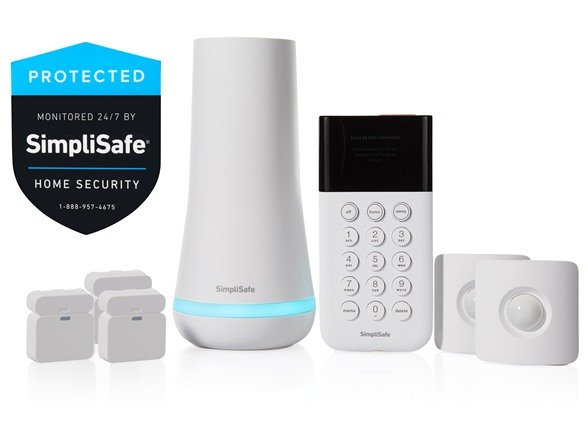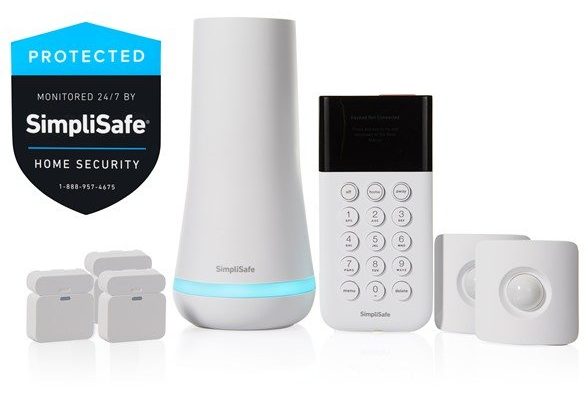
SimpliSafe has made a name for itself with its easy-to-install, wireless home security systems—so, it makes sense that questions about coverage, troubleshooting, and ownership pop up a lot. If you’re hoping to pass on a SimpliSafe base station, sensors, or remote, you want things to go smoothly for the next person. Let’s get into the nitty-gritty of SimpliSafe warranties, transfers, and what options you actually have.
How SimpliSafe’s Warranty Works
First off, it helps to know what you’re actually dealing with. **SimpliSafe offers a limited warranty**—typically, this lasts three years from the original date of purchase. During that time, if any part of the system fails due to defects in materials or workmanship, SimpliSafe will repair or replace it for free. Think of it as a safety net for your “safety net.” But here’s the thing: this warranty is tied to the person who bought the system and to the original receipt.
The warranty covers hardware like keypads, entry sensors, motion sensors, and the base station. Even the rechargeable backup battery and remote are included, just in case you run into issues syncing, pairing, or even with battery performance. But, as with most tech companies, SimpliSafe’s policy is written with a few conditions and limits—so don’t expect it to cover accidents, misuse, or that time your dog decided the sensor was a chew toy.
So, to sum it up: if you bought your SimpliSafe kit from an authorized seller and you’re still within the three-year window, you’re covered—as long as you’re the one who bought it (more on that in just a bit).
SimpliSafe’s Official Stance on Warranty Transfers
Here’s where things get a bit sticky. You might be hoping, “Hey, if I give my security system to my neighbor, can they just call up SimpliSafe for support if something goes wrong?” Well, **SimpliSafe does NOT officially transfer warranties to new owners**. The warranty is non-transferable, meaning it’s only good for the original purchaser who has proof of purchase.
If you’re the buyer, you’ll probably have to go without warranty support, unless the original owner helps out directly. Some folks try creative workarounds (like keeping the original owner’s name on the support account or using the same email), but honestly, that’s not how SimpliSafe intended things to work—and it can cause headaches later if you need real troubleshooting, replacement codes, or warranty repairs.
If you’re buying a used SimpliSafe kit, it’s a bit like getting a car from a friend but not getting the manufacturer’s warranty—just a handshake and a “good luck!”
From SimpliSafe’s side, this policy helps prevent fraud, “flipping” of hardware, or support headaches. On the flip side, it’s not super friendly for secondhand buyers. So, if warranty backup is a must-have for you, buying new (or getting it as a direct gift with the receipt) is the safest route.
What Actually Happens If You Sell or Gift Your SimpliSafe System?
Let’s say you go ahead and hand off your SimpliSafe package. What happens next? The new owner can still use the system, reset it, sync the devices, and even re-pair remotes—after all, these features aren’t locked behind owner accounts. The only thing they lose out on is **warranty coverage**. If something breaks or malfunctions, the new owner can’t request a free repair or replacement through SimpliSafe’s warranty program unless they have the original buyer by their side.
If you’re passing along your system, you should:
- Disconnect your SimpliSafe account from the hardware (so the new owner can set up their own monitoring service).
- Factory reset the base station and all devices, so your old settings and codes vanish—think of it as erasing your fingerprint from the safe.
- Hand over all hardware: sensors, remote, base, keypad, batteries, and manuals if you kept them.
The new owner will need to create their own SimpliSafe account, subscribe to monitoring (if they want), and go through the pairing process for each device. Luckily, SimpliSafe’s setup is pretty user-friendly, and most folks can get it up and running again with a quick sync or reset—even total beginners.
Can You “Work Around” the Warranty Transfer Rule?
You might be wondering, “Could I just help the new owner out by handling warranty claims for them?” In theory, yes—you could stay in the loop and deal with SimpliSafe support yourself if repairs are needed, since the coverage follows your name and purchase info. But let me explain why that hardly ever works out in real life.
First, you need to keep a friendly relationship open with the new owner, which isn’t always practical or desirable. Second, SimpliSafe may ask for proof of purchase, serial codes, order numbers, or emails during the process. If support needs to send out replacement parts, they’re going to send them to your address—not the new owner’s. Plus, imagine having to be the “middleman” every time a battery dies or a sensor gets cranky. Honestly, that’s a hassle most people don’t want.
So, while possible, it’s just not a smooth or sustainable solution for most situations. If warranty coverage really matters, you’re better off sticking with the official path—or picking a brand that does allow warranty transfers, even if that means hunting for a “universal” alternative (though those are rare for security hardware).
How SimpliSafe Compares to Other Security System Brands
It’s always smart to see how SimpliSafe stacks up against the competition. Many home security brands treat warranties the same way: they’re tied to the original buyer, not the hardware itself. For example, **Ring**, **ADT**, and most smart home brands use this non-transferable model, especially to curb support scams and track product codes.
On the other hand, a handful of brands (usually higher-end or DIY-friendly ones) sometimes offer transferable warranties. But you have to jump through a few hoops, like registering the product online, providing the original sales receipt, or filing a transfer application within a set window. Even then, the coverage might be less generous or have strings attached.
Here’s the thing: **universal remotes** and similar devices sometimes allow easier warranty transfers, since they’re designed for reuse across brands and settings. With something as customized as a SimpliSafe system, though, the company is much more cautious about who gets official support or troubleshooting help.
Tips for Buying or Selling a Used SimpliSafe System
If you’re set on passing along your SimpliSafe system—whether you’re the seller or the buyer—there are a few things to keep in mind to avoid headaches:
- Ask for all accessories: Make sure you get every sensor, base station, keypad, backup battery, and remote.
- Request the original receipt: Even though the warranty won’t transfer, having the receipt might help with troubleshooting or getting replacement codes from SimpliSafe (if you call as the “original owner”).
- Ask for a full factory reset: This clears all codes and syncs, so you don’t accidentally inherit someone else’s settings or alarms.
- Test every device before finalizing the handoff—just in case a sensor was already failing or the base station struggles to pair.
For the buyer: don’t expect warranty protection, but you can still get plenty of life out of a used SimpliSafe setup. And for the seller: a clean reset and full accessory list keeps both parties happy—and avoids awkward phone calls later about lost remotes or dead batteries.
What Troubleshooting and Support Can New Owners Access?
Though the official warranty won’t transfer, that doesn’t mean new owners are out in the cold. SimpliSafe’s **customer support** will usually help anyone over the phone, especially if you need basic troubleshooting tips, a code or sync reset, or help pairing a stubborn sensor or remote. You’ll just hit a wall if you ask for free replacements under the warranty.
If you run into typical problems:
- Sensor not pairing? Try resetting the base and re-syncing each sensor.
- Remote won’t work? Check the battery, then follow pairing instructions (often just a quick code entry or holding a button for a few seconds).
- System won’t arm? It may need a full factory reset, especially after changing ownership.
Most issues can be fixed with a mix of DIY troubleshooting and a call to SimpliSafe’s helpline. The main difference is you’ll pay out of pocket for replacement parts past the original warranty. Still, you won’t be locked out of the system just because you’re not the first owner.
Is Owning a Used SimpliSafe System Worth It?
Honestly, it all comes down to your risk tolerance. If you want **rock-solid warranty coverage**, buying new is best. But if you’re comfortable handling your own troubleshooting, code resets, and maybe swapping out a sensor or battery now and then, a used SimpliSafe system could be a bargain. Just adjust your expectations, and know you’re skipping the safety net that comes with the original owner’s warranty.
For some folks—say you’re setting up security in a short-term rental or a guest house—the savings might outweigh the lack of warranty. But if you’re hoping for long-term reliability, or you know you’ll need extra support (especially with pairing, battery swapping, or remote issues), you might end up wishing you’d started with a new kit.
Think of a secondhand SimpliSafe system like a passed-down smartphone: great if you just need it to work, but trickier when it comes to repairs or guarantees.
Final Thoughts: SimpliSafe Warranty Transfer, Simplified
So, can you transfer warranty on a SimpliSafe security system to a new owner? The short answer: no, not officially. The warranty is built for the original buyer only, and SimpliSafe doesn’t allow direct transfers—even if you hand over the box, the remote, and the secret passwords. But as long as you’re honest about what’s covered and make sure to reset and pair everything for the next person, a used system can still be a solid option.
Whether you’re handing off your home security setup or picking up a pre-loved kit, keep your expectations realistic. Focus on what you *can* control: a clean transfer, a fresh setup, and clear communication between seller and buyer. In the end, peace of mind isn’t just about having a warranty—it’s knowing how your system works, how to keep it running, and how to fix the basics when something goes off script.
